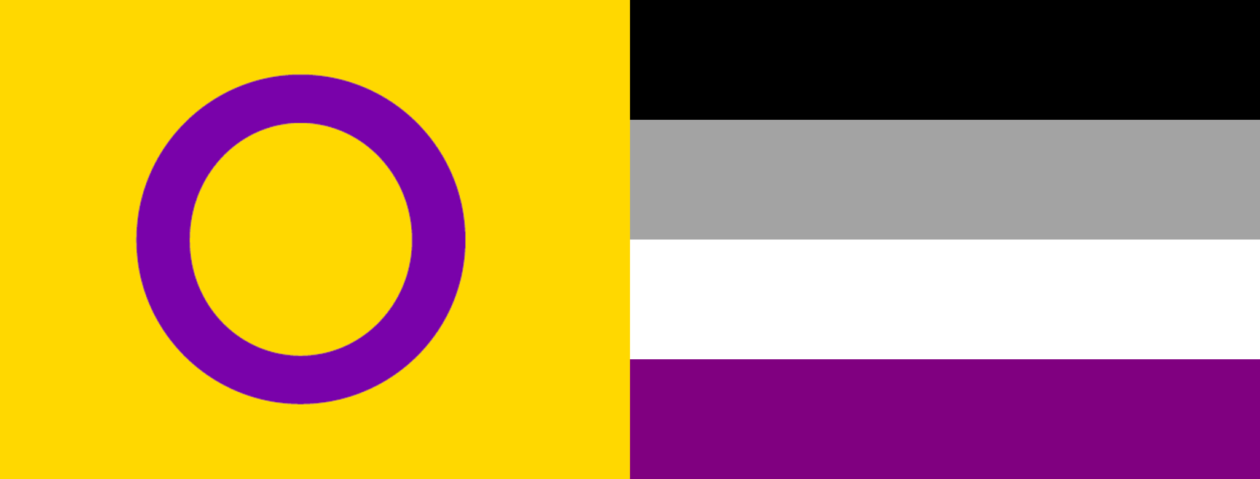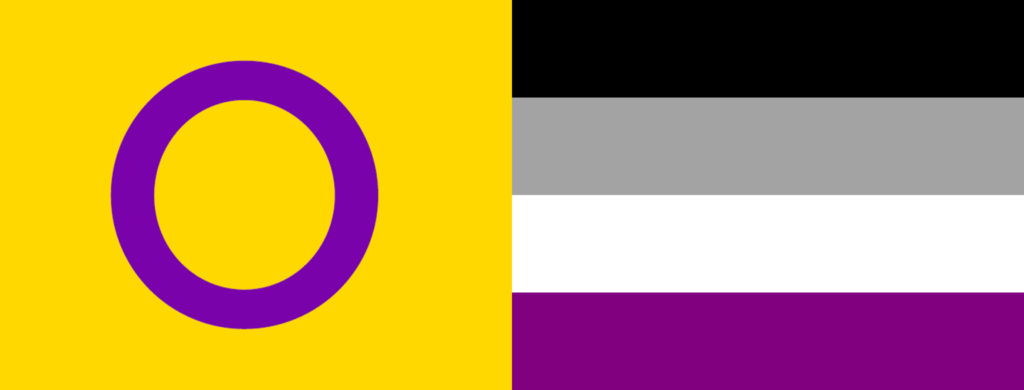
Let’s not forget the I & A in LGBTQIA+
What is Ace Week
During the last week of October, we celebrated Ace Week, an event that advocates for people under the asexual umbrella. The term “Ace” refers to anyone who is on the asexual spectrum, from gray-asexual to demisexual and beyond. Once known as Asexual Awareness Week, the name was modified in recent years to better reflect the community’s membership and the week’s goals of inclusion and advocacy, rather than simple awareness.
We can use this opportunity to spark conversation about the social norm of sexuality being a central pillar of our lives. The discussion of asexuality also allows us to reexamine what being LGBTQIA+ means today.
Asexuality
What is Asexuality?
Asexuality exists on a spectrum. Therefore, what one member of the Ace community experiences is not the same as the rest. People often assume that asexuality and celibacy go hand in hand; however, the two are not interchangeable.
Asexuality is a natural sexual orientation in which people experience little to no sexual attraction. Celibacy is a choice that anyone can take regardless of their orientation or identity. While many Ace people do not engage in sex, some do.
Misconceptions of the A in LGBTQIA+
For a long time, there have been misunderstandings about the Ace community, beginning with whether or not they should even be included in the LGBTQIA+ community. There is a common misconception that the “A” in the acronym stands for “Ally” instead of “Ace” or “Asexual.” While allies are important, the “A” represents our siblings who fall under the asexual umbrella.
Another common misconception is that Ace people do not experience discrimination or oppression. While members of the Ace community tend to receive less public harassment than their other LGBTQIA+ peers, it does not mean they are not discriminated against or oppressed.
The truth is, because Ace people often fly under the radar, they are often underrepresented or treated with hostility for being who they are.
History of Asexuality
The term asexuality (or rather, “anesthesia sexual”) was first coined by German sexologist Magnus Hirschfeld in 1896. The following year, another German and openly asexual woman, Emma Trosse, first defined asexuality. In the decades to follow references to the identity began to grow. While it wasn’t often described as an orientation in these early days, it did make its way onto the Kinsey Scale in the 1940s.
Some observers consider asexuality to be the “first internet orientation,” as the Ace community was most publicly visible in online forums. However, this statement is largely inaccurate. Even though asexual identities flourished online, asexuality was already a recognized self-identity in queer spaces since the 1960s. There are mentions of asexuality, captured in photography dating back to 1973, long before the Internet was a thing!
That is not to say that online forums are not crucial to the development of Ace and other marginalized communities since the advent of the internet. Many asexual individuals used these digital communities to help discover and answer questions about their sexuality.
Yahoo! group Haven for the Human Amoeba (HHA) and the Asexual Visibility and Education Network (AVEN) forums were the first online asexual communities. The latter still serves the asexual community and promotes discussion and acceptance of asexuality. Its forum format allows its users to ask questions about the topics impacting the community in a safe space. It even held a contest that led to the creation of the Ace flag design and colors that we all love and use today.
AVEN provides good resources that help people understand more about individuals under the Ace umbrella. By using resources like AVEN and educating people to confront these misconceptions, we can work to speak up and stand behind members of the Ace community.
Asexuality.net provides a more detailed history of asexuality.
Ace Discrimination
Although the Ace community is more accepted nowadays, particularly in queer spaces, it has not always been like this. In fact, in its early history, Ace individuals were not even understood by the LGBTQ+ community, or how Ace identities fit within the LGBTQ+ umbrella.
For example, in 2009, an Ace group led by AVEN founder, David Jay, first marched in San Francisco Pride. Some onlookers were visibly confused as to why the asexual group was there, and someone even asked the group to stand far away from them.
For a movement based on sexuality, the lack of sexuality created a sort of division in thought and prompted discourse on what falls under the LGBTQ+ category. This resulted in heated discussions on whether asexuals belong within the community.
Asexuality is A Valid and Supported Sexual Orientation
Asexuality is not a new phenomenon but a valid orientation. As new terminology became mainstream on the internet, people had a tool to better understand what they are feeling. These online communities allowed asexual people to further connect with others who felt the same way.
The Ace community can give us a clearer understanding of what the LGBTQ+ movement should stand for — providing a safe space for those whose sexual orientations and gender identities might differ from cisgender and heteronormative norms.
Ultimately, all Ace individuals should be accepted for who they are because they are valid and are welcome members of the larger LGBTQ+ community. By using resources like AVEN and educating people to confront these misconceptions, we can work to speak up and stand behind members of the Ace community.
Intersex
Introduction to Intersex
Intersex people are individuals who do not have sexual anatomy that fits the binary male or female binary, or display features of both sexes.
It is estimated that 1.7% of the population or about 1 in 2000 is born intersex; however, comprehensive data on intersex individuals are limited. Sexual anatomy for intersexuals may not be visible at birth and may show up during puberty, or later in life. Some people may never realize they are intersex.
Myths and Misconceptions
Like the Ace community, the Intersex community tends to be misunderstood and underrepresented within the LGBTQIA+ community.
The terms intersex and transgender are not the same things. Because doctors assign all babies a legal sex (male or female) at birth, intersex individuals’ gender identity may more commonly not align with their sex assigned at birth. So, while one can be intersex and identify also identify as transgender, one does not automatically mean the other.
Interex individuals can have any gender identity or sexual orientation because intersex refers to their sexual biology, not their gender identity, sexual orientation, or physical expression. This means that someone can be intersex and also bisexual, non-binary, and so forth.
Another striking difference between transgender and intersex people is that, most commonly, the former is fighting to get the surgery they want, whereas the latter has to fight against unwanted and nonconsensual surgical operations during their childhood.
Intersex Reconstructive Surgery
Intersexual individuals share many experiences and challenges similar to the LGBTQIA+ community. For example, they are often told that they are “disordered” by doctors recommending their bodies be “corrected” through treatment, including surgery. In this way, the body of intersexual people is often pathologized because of homophobia, transphobia, misogyny, outdated gender norms, and the binary spectrum of human sex characteristics. This mirrors other outdated clinical treatments for homosexuality and other minority groups to fit the current expectations of society.
For decades, doctors have performed medical procedures on children, usually under 2 years of age and not old enough to provide consent. To date, there are no comprehensive data on intersex surgeries.
Some parents elect for their children to undergo genital reconstructive surgery to make them “normal,” or reflect either solely male or female sexual anatomy. Under the guise that this would enable their child to lead a normal, unstigmatized life, parents’ decisions to follow through with unnecessary procedures have resulted in enduring physical and psychological harm.
Intersex children who underwent reconstructive surgery are often left with irreversible damages, such as mental distress and infertility as a direct result of the surgery, and gender assignment that they had no control over.
The practice of non-consensual genital reconstruction insinuates that Intersex people have a condition that needs correction. The social construct of the gender binary perpetuates this misconception. Most of the non-consensual, invasive procedures are not done on the basis of a medical emergency, which, according to Amnesty International, is a violation of human rights.
Intersex Day of Remembrance
On November 8th, we celebrated the Intersex Day of Remembrance. The day exists to shed light on the violence against Intersex people, or those born with nonbinary reproductive anatomy.Intersex individuals have the right to be biologically different and to determine how they wish to develop. In celebrating Intersex Day of Remembrance, we look to uphold these rights and stand in solidarity with Intersex people. Discover what you can do as an Intersex rights advocate.
Article written by:
Shannon Colford, Winnie Ou, and Bryan Aubineau
Last updated: October 22, 2022


